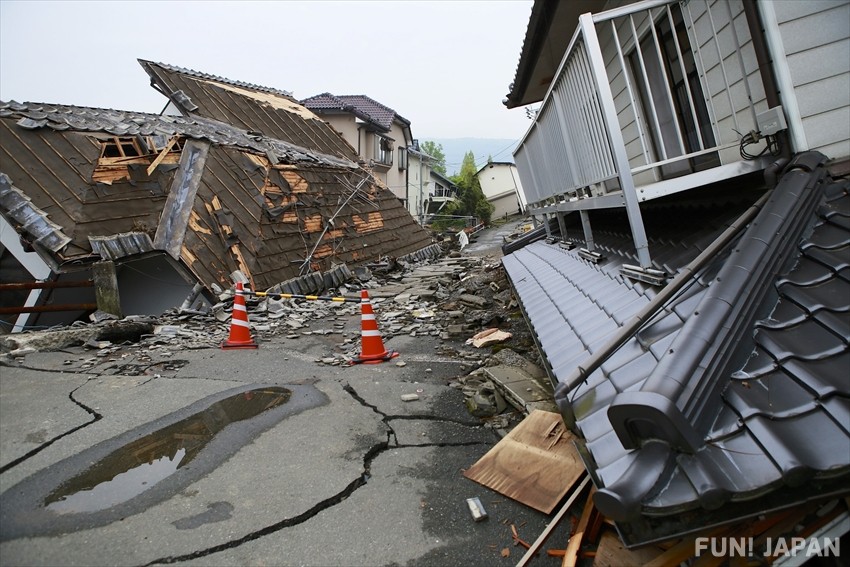
Earthquakes are a regular feature in Japanese life, with drills and phone apps part and parcel of daily routines. While this may seem unusual for those visiting from countries without frequent quakes, it is a good idea to be prepared in case of a large quake.
Large Earthquakes in Japanese History
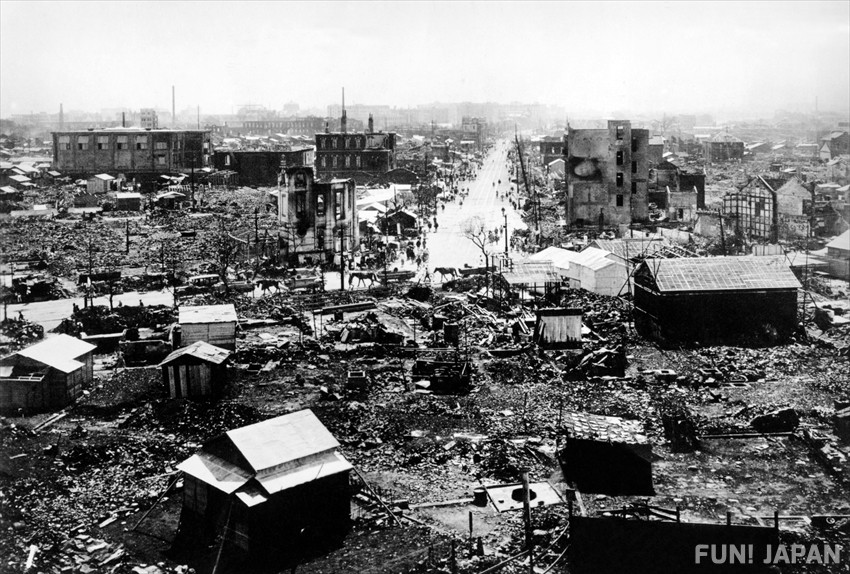
Throughout history, Japan has been struck with large earthquakes in most regions. The meeting point of multiple continental and oceanic plates, it is an area rife with shifts and volcanic activity. While the majority of these are small and cause little to no damage, there have been many with a devastating impact.
The Great Kanto Earthquake
Still the worst quake in Japanese history, the Great Kanto Earthquake took place on September 1st, 1923. Striking the Kanto region including Tokyo, it was 8.3M, and claimed the lives of around 140,000 people.
The Great Hanshin Earthquake
Striking early in the morning on the 17th January, 1995, the Hanshin or Awaji Earthquake struck Awaji Island, near Kobe city at a strength of 7.3M. While the shaking lasted only 20 seconds, over 6,000 people were killed - the majority from Kobe.
The Great East Japan Earthquake
Lasting six minutes and reaching 9-9.1 on the Mw scale, the Great East Japan Earthquake, occured on March 11th, 2011, triggered a devastating Tsunami. The epicenter was in the pacific ocean outside the Tohoku region and it was the strongest quake ever recorded in Japan. Almost 20,000 people were killed and the damage to the Fukushima Nuclear plant led to the evacuation of thousands, many permanently.
The Japanese Earthquake Measurement System
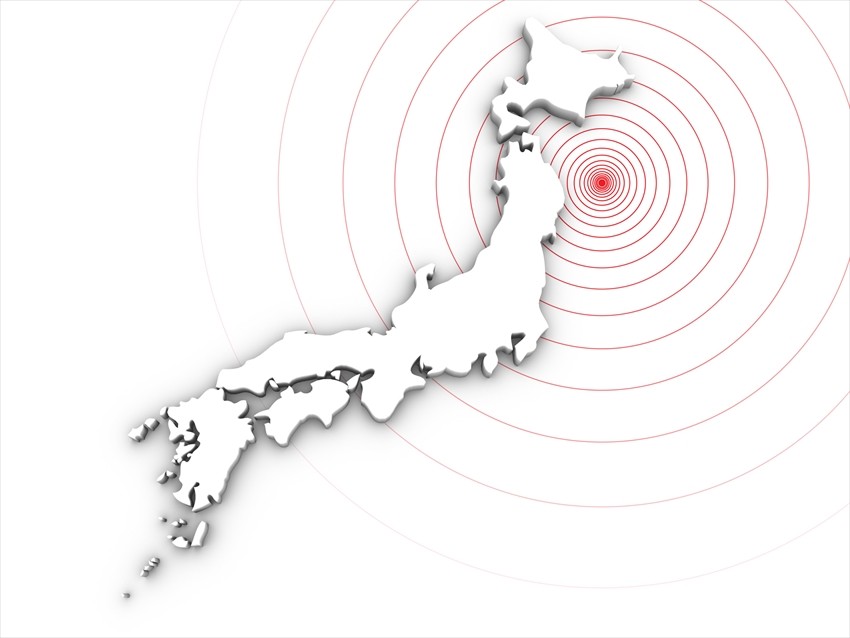
Unique to Japan, the Shindo scale is an earthquake measurement system which details the physical impact of quakes. It is not comparable to the measurement scales for the energy expelled by an earthquake, such as the Moment Magnitude (Mw) or Richter Scale. Instead, it measures the surface shaking across different areas. The scale was originally four levels when started by the Central Meteorological Agency in 1884, before being advanced to seven levels in 1898.
The Seven Shindo Scales
The seven levels have factors based on their impact for people, buildings, utilities and more. The seven basic levels are 1-7, with additional levels between five and six:
- One: Not noticed by most people and no visible shaking in most buildings.
- Two: Noticeable in some higher buildings with some movement.
- Three: Most people indoors will notice, some outside, some will wake up. Buildings will shake but with minimal damage.
- Four: People will be afraid, objects will fall, power lines will swing, possible interruptions to electricity and some damage to non-resistant buildings.
- Five-: Most people will seek safety outside, some will have difficulty moving. Furniture will move and windows may break, with damage to low-resistant buildings, some rockfalls.
- Five+: It is difficult to move for many people, larger furniture may fall and doors are hard to open. Cars struggle to drive, less resistant houses suffer strong damage, gas and water may be affected.
- Six-: It is difficult for people to stand and large furniture falls, electricity polls may fall causing fires. Less resistant houses may collapse, services are interrupted and cracks can appear in the ground.
- Six+: It is impossible to stand, trees may fall and bridges or roads suffer damage. Houses will collapse or be damaged depending on resistance level, services are damaged and cracks appear with landslides.
- Seven: People are thrown by the shaking and majority of buildings collapse or are damaged, regardless of resistance. All services are interrupted and the ground is distorted, with cracks and area-wide landslides.
Japan’s Earthquake-Resistant Architecture
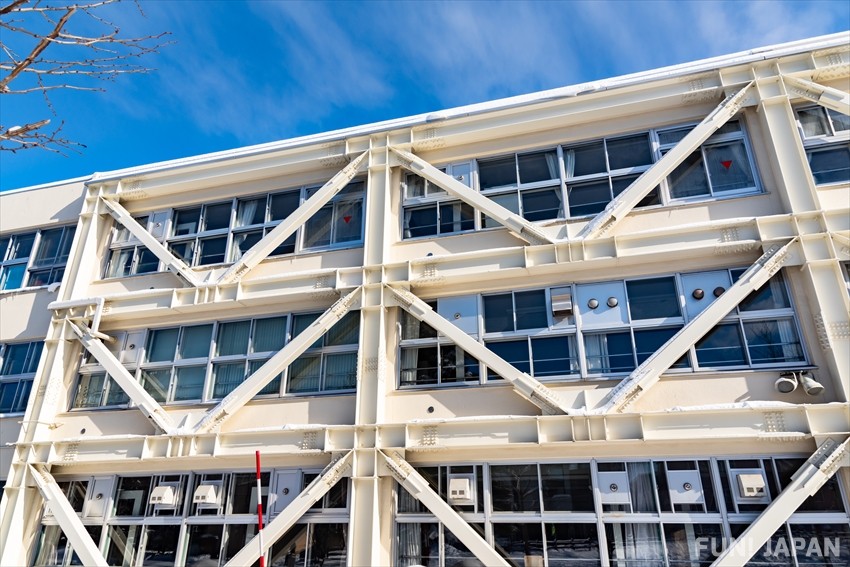
Given the frequency of strong earthquakes in Japan, it can often be a surprise that there isn’t more damage to large buildings. This is due to the strict building regulations and complex earthquake-resistant design that is required. While in traditional building wooden joints were used to provide flexibility during quakes, modern buildings have to adhere to strict regulations. These have been updated in 1971, 1981, 1995, 2000 and 2009 and depend on elements such as size, material and foundations.
There are two primary factors in earthquake resistant technology: Vibration Isolation (防震), also known as dampening, and Seismic Isolation (免震). The former focuses on minimising seismic motion by placing absorbing walls within the structure, potentially reducing motion by up to 80%. Seismic Isolation relies on quake-absorbing structures within the foundations of the building, often using combinations of rubber blocks, springs, ball bearings and other items. This can reduce intensity by around one third to one fifth.
How to Prepare for an Earthquake in Japan
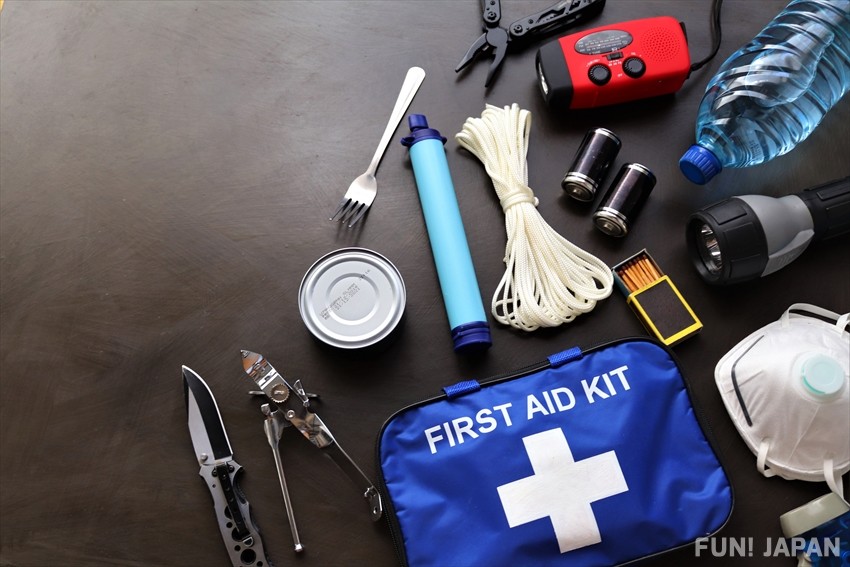
As earthquakes are a common occurrence and can be severe, it is important to be prepared for them. If you are staying in hotels, it is important to check their procedures and meeting points when you arrive (this information is provided in the room) and be sure to check your route. If you are staying in private accommodation, researching your nearest evacuation point is also important.
There are apps you can download with warnings and alarms as well as advice on what to do and where to go. Using online apps such as Line which was developed after the 2011 disaster to stay in touch is advised, as while may forms of contact will go down, these are designed to last as long as possible.
Emergency Bag: What to Pack
Having an Earthquake bag is vital and there are many lists available on what to include. Using a backpack is ideal as it is easy to carry while keeping your hands free, which can be important if you are navigating difficult terrain, climbing or have children coming with you. Things to include:
- Clothing: At least one change of clothes plus warm layers and waterproofs.
- Food: Choose easy to prepare items with a long shelf life such as instant noodles, energy bars, canned food, dehydrated food or special emergency food.
- Water: Bottles of water are heavy but vital and can also be refilled. It is reccomended you have one gallon per person.
- Tech: Additional battery packs, chargers, batteries and cables are important.
- Tools: Simple items such as a can opener and lighter are important, or a multi-tool.
- Flashlight and Whistle: Important for safety and alerting people to your location.
- First-Aid Kit: A well-stocked kit can be very important for tending to injuries when medical aid may not be available.
- Hygiene Kit: Items such as tissues, antibacterial wipes, masks, hand sanitiser and portable toilets (often used by campers) are also good.
- Shelter kits: These can include emergency tents, heat packs and emergency blankets should you need shelter.
- Cash: As banks are likely to be unavailable, having some cash available can be vital, especially during extended emergencies.
- Personal Documents: Ensure copied or originals of your ID, residence card, insurance, visas and rental agreements are stored in case you cannot access your home.
- Personal Items: It can be a good idea to include spare glasses, medication and sentimental items in one place so you do not have to worry about gathering items in an emergency.
What to do when an Earthquake Strikes in Japan

If you’re in Japan when an earthquake strikes, there are some simple actions to take depending on where you are and the strength of the quake.
During the Earthquake
The simple rule of drop, cover and hold works well to remember what to do during the quake. Dropping to the ground prevents falls, while covering your head and neck with your arms or a bag to protect them from falling objects. If available, hold on to something to stop yourself being thrown by very strong tremors. Many earthquakes only last seconds but the predicted large quake may last minutes and get increasingly more violent. If you are in public transport it is best to keep away from windows, as in all buildings, and wait for instructions. Drivers should pull over immediately ideally away from electricity cables, trees or bridges. If you leave your car, leave it unlocked with keys in so rescue workers can move it.
After the Earthquake
When the earthquake has ended, there are many potential risks to consider. If you are living by the sea, head to higher ground immediately rather than waiting for a tsunami alarm. In buildings, head outside but do not use elevators, and be prepared for aftershocks. There are evacuation sites in every town, often located in schools, parks or government buildings and well signposted. If needed, head to one of these or go to an open space such as a park. In all cases, bring your emergency pack with you.
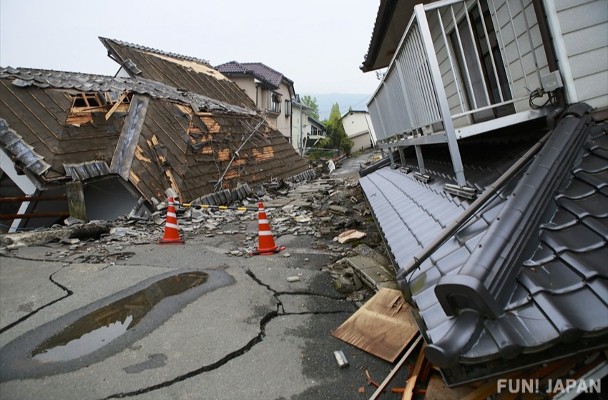
Comments